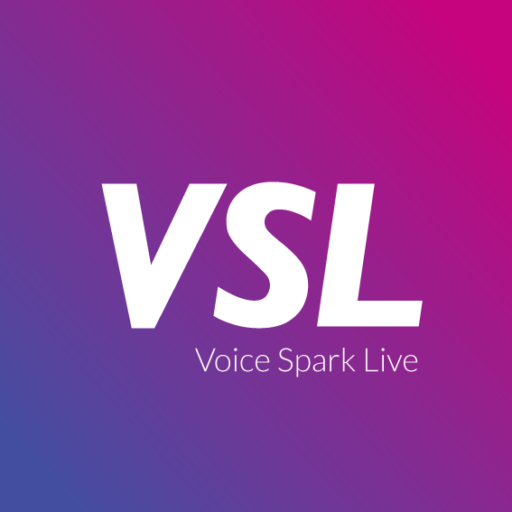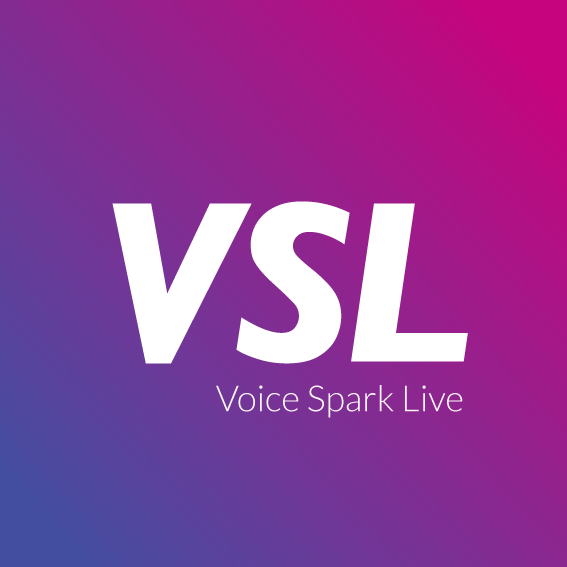|
|
by Karen Scates
Link to original article

The automotive industry was one of the early adopters of voice AI technology as a natural extension of efforts to make driving safer and more convenient. Today, auto manufacturers are looking toward the future of connected cars that go way beyond the ordinary features we’re used to. Making cars a part of the Internet of Things (IoT) has been a growing trend since 2005 and is expected to accelerate in the next few years. Keeping the experience hands-free with custom voice assistants is a critical element of that trend.
According to Business Insider Intelligence, the number of connected cars shipped is expected to grow from 33 million in 2017 to over 77 million by 2025, and there are projected to be around 14 million semi- or fully autonomous vehicles (AVs) on the roads in the US by 2025.
In addition to the benefits to drivers, internet connectivity allows automakers to send updates to the car directly from the cloud, eliminating the need to send out recall notices and dispatch customers back to the dealer. Cloud-connected vehicles also provide car companies with valuable data to help them understand what customers are asking for and to guide the future product roadmap—a critical element in an extremely competitive market.
Connected car shipments are expected to rise from 33 million in 2017 to over 77 million by 2025, and there are projected to be around 14 million semi- or fully autonomous vehicles (AVs) on the roads in the U.S. by 2025.
The future of connected cars
In the future, it won’t just be cars that are connected to the IoT. All forms of transportation will include voice user interfaces and cloud connections to help the vehicles themselves be more efficient while affording passengers greater convenience and the safety of touchless experiences in public places, now at the forefront of everyone’s minds as a result of the pandemic of 2020.
Even before the initial lockdown, Allied market research predicted that global IoT in the transportation market would reach $328.76 billion by 2023, growing at a rate of 13.7% from 2017. As the entire transportation industry gets smarter and more convenient, leading car manufacturers will be looking toward the future of connected and autonomous cars.
Global IoT in the transportation market will reach $328.76 billion by 2023
For Mercedes-Benz, the future is already here. While their MBUX voice assistant has always been ahead of its time, the newest upgrades to the voice assistant technology—powered by Houndify—position it to continue to lead the industry in connected vehicle technology. Keeping the in-car controls as an embedded voice feature, MBUX uses cloud-based voice technology provided by Houndify to enhance the user experience in a variety of ways, including:
- Accessing cloud-based information like navigation, local search, music, sports scores etc.
- Connecting the driver to the smart home
- Using data collection to inform future upgrades and product roadmaps
See how the latest version of the MBUX voice assistant by Mercedes-Benz has made driving experiences safer, smarter, more natural, and hands-free.
If you’re looking to move your voice experience from a simple command and control of in-car functions to a truly connected car, here are 4 lessons from top automakers:
1. Begin with a better voice user interface (VUI)
When we talk about cars as part of the IoT, that definition should go beyond access to the cloud. The cars themselves must provide a level of connectivity that allows users to move seamlessly from home to car to office and back to the car—taking their personal assistant with them. This approach requires a combination of cloud connectivity and state-of-the-art voice AI that allows for conversational interactions that don’t require learning a new set of commands for every context.
Advanced Automatic Speech Recognition (ASR) technology is the key to bringing a voice assistant to life and elevating the experience from a robotic machine interaction to an answer and response exchange that mimics that of a conversation between humans. While there are a growing number of voice user interface solutions available, not many allow users to ask complex and compound questions that create a conversation and eliminate the need to repeat information between queries.
Here is an example of what is possible with advanced ASR technology:
User: “I’m hungry”
Car: “There are 5 restaurants within 3 miles of your current location”
User: “Show me the ones that serve Italian food, but not pizza”
Car: “Tony’s Restaurant serves Italian food, but not pizza, and is 2 miles from your current location”
User: “Navigate there”
Car: “Ok, take the next left at Waldorf Street”
These types of results are achieved through a combination of advanced Natural Language Understanding (NLU) technology and acoustic modeling architecture that uses machine learning to increase word recognition accuracy. To deliver accurate results, the ASR must also be able to operate in the presence of road noise, passenger noise, and other ambient noises that are often present inside a car.
To meet the needs of all drivers, the ASR technology used in your voice assistant must be advanced enough to adjust for accented language and to understand more than just English. Depending on where your vehicles will be made available, you will need an ASR that supports a wide range of languages and delivers accurate results when the driver or passenger speaks with an accent. For example, our partners like Hyundai, need to support specific regional accents like Indian English.
Even when advanced voice AI technology is integrated, creating multilingual voice assistants is more than just providing translations from English to the language of choice. Localization—including targeted content and formats—is essential to ensure the voice assistant responds in a culturally-acceptable manner, and can understand speech in the context of differing rules of grammar.
Take the voice experience one step further and connect your drivers to the world around them with cloud-based and hybrid voice AI technology.
2. The smart home connection
Take connectivity to the next level by allowing drivers and passengers to link and unlink to their smart home accounts directly from your in-car system, hands-free.
Examples of smart home connections include the ability to:
- Check which smart home accounts are linked
- Control connected smart home devices
- Get information about recent movements in the smart home
- Check and adjust the temperature in the smart home
- Check door lock and window lock status
- Get a summary of the current status of smart home devices
- Control connected blinds
Cloud connectivity and a voice assistant that is flexible, scalable, fast, and accurate make the magic happen and allow users to experience a level of connectivity not possible with an embedded-only solution or a voice solution that’s tethered to a third-party platform like Alexa or Google.
3. The importance of owning your data
Don’t turn over your brand experience or customer data to a third party. As any car manufacturer who has already built a custom voice assistant will tell you, the user data you’ll collect will be invaluable in determining your future roadmap and determine which improvements will help meet your customers’ needs. Such improvements may include adding more domains, increasing the range of queries and utterances supported, and adding new functionality to the voice interface. Without a cloud-connected voice assistant, brands are forced to work on assumptions about their customers’ needs. When the voice assistant is tethered to a third-party platform, such as Alexa or Google, not only do brands lose control of their user data, they also lose the opportunity to extend their brand identity through voice experiences.
Inevitably, the subject of data privacy becomes part of any discussion about data collection from voice assistants. While data collection is a reality to help with continuous improvements, your customers are more likely to feel comfortable knowing their data isn’t going to a third-party platform and mined for advertising and marketing opportunities.
When the voice assistant is tethered to a third-party platform, such as Alexa or Google, not only do brands lose control of their user data, they also lose the opportunity to extend their brand identity through voice experiences.
Owning your data also means controlling how that data is used and having the ability to communicate your data privacy policies to your customers. Auto manufacturers who have implemented custom voice assistants with cloud connectivity, understand the importance of protecting user privacy and collecting only the data necessary to ensure every user has the best voice experience possible.
4. Giving users a wide variety of information and entertainment
Up to date navigation, weather, news, podcasts and radio stations, music, restaurant search, gas station locations, and other useful and entertaining content require a cloud connection and a voice AI platform with a library of domains that bring the voice assistant experience to life.
Of course, embedded systems can be used to control in-car functions such as controlling the temperature and rolling down windows, but those functions can still be performed by turning a knob or pressing a button. The real magic happens when the driving experience is transformed into an entertaining and helpful one by just asking for your favorite podcast, or nearby Thai restaurants with outdoor seating, or the latest sports scores from your favorite teams, all hands-free.
A voice assistant platform with a library of domains makes the enchantment easier to conjure, eliminating the need to write every subject domain from scratch. The ability to customize commands allows voice AI developers to use customer data to fine-tune the voice experience by modifying queries to match the phrasing expressed by their users.
The real magic happens when the driving experience is transformed into an entertaining and helpful one by just asking for your favorite podcast, or nearby Thai restaurants with outdoor seating, or the latest sports scores from your favorite teams, all hands-free.
By utilizing a combination of existing content libraries and custom domains and custom commands, in-car voice experiences can deliver a wide range of content and entertainment options directly from the cloud.
Providing drivers with a “computer on wheels” that can connect them immediately to their smart home devices means no more worrying that you forgot to lock the front door or turn off the heat when you’re already half-way to your vacation destination.
Driving has become more than just a method to travel from place to place, it has become an opportunity to be entertained, while remaining connected to home and the rest of the world, just by asking.
Developers interested in exploring the Houndify independent voice AI platform can visit Houndify.com to register for a free account. Want to know more? Talk to us about how we can bring your voice strategy to life






2 Responses
Thank you, Karen for this piece. I love your take on the subject and Voice in Auto is an absolute fit. I know your company is doing a great part in moving the technology further with a really robust branded experience. I look forward to talking more on this subject with you.
Thank you Benjamin! Appreciate you posting this on your site. Looking forward to more conversations about how voice AI is creating a world where people can talk to machines the way they talk to each other, while making it safer and more convenient at the same time!